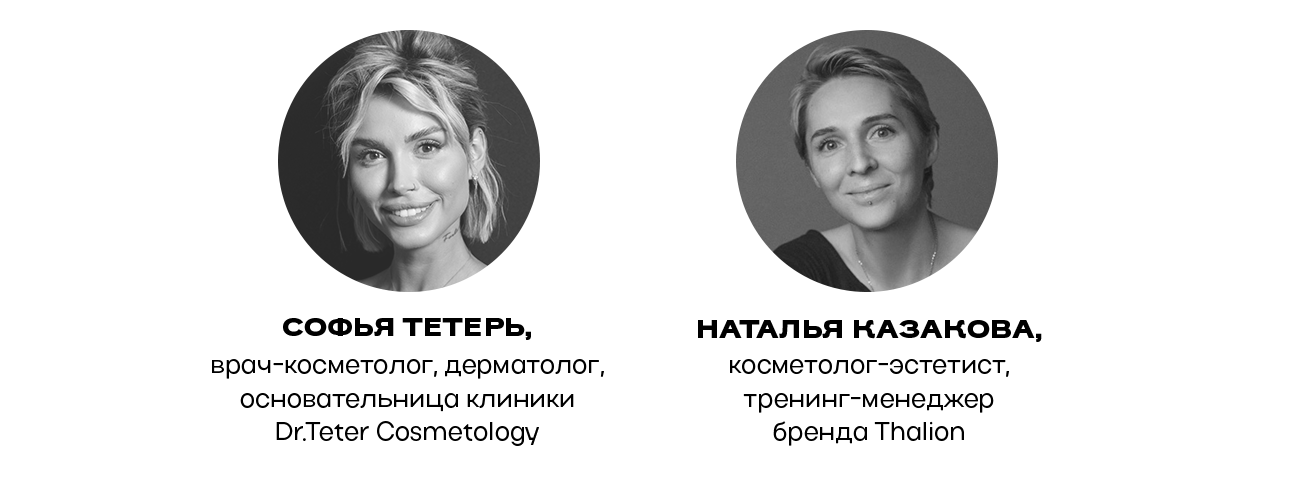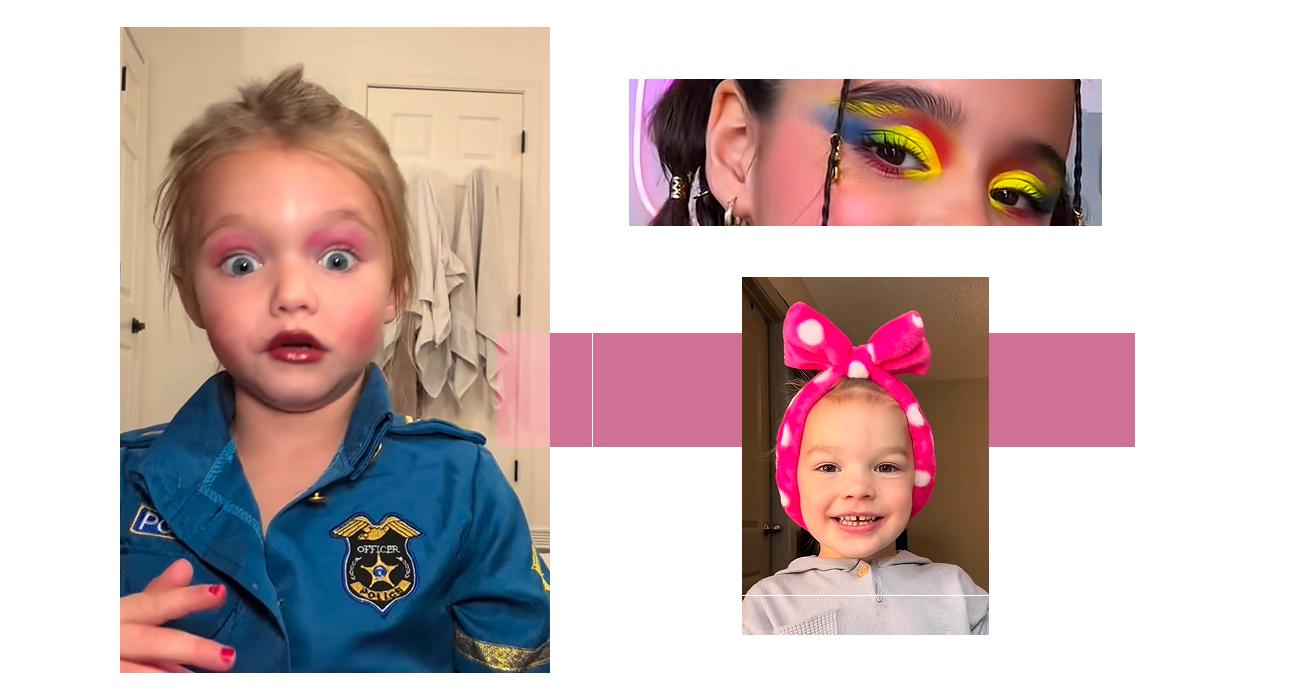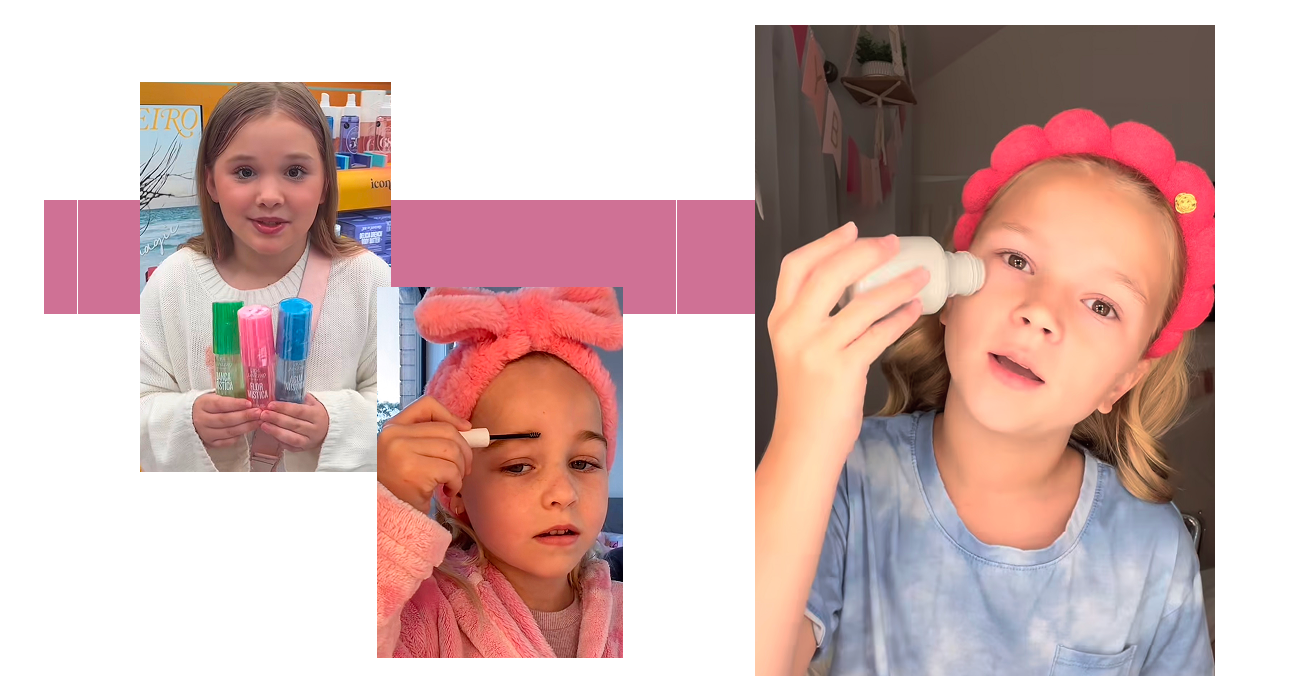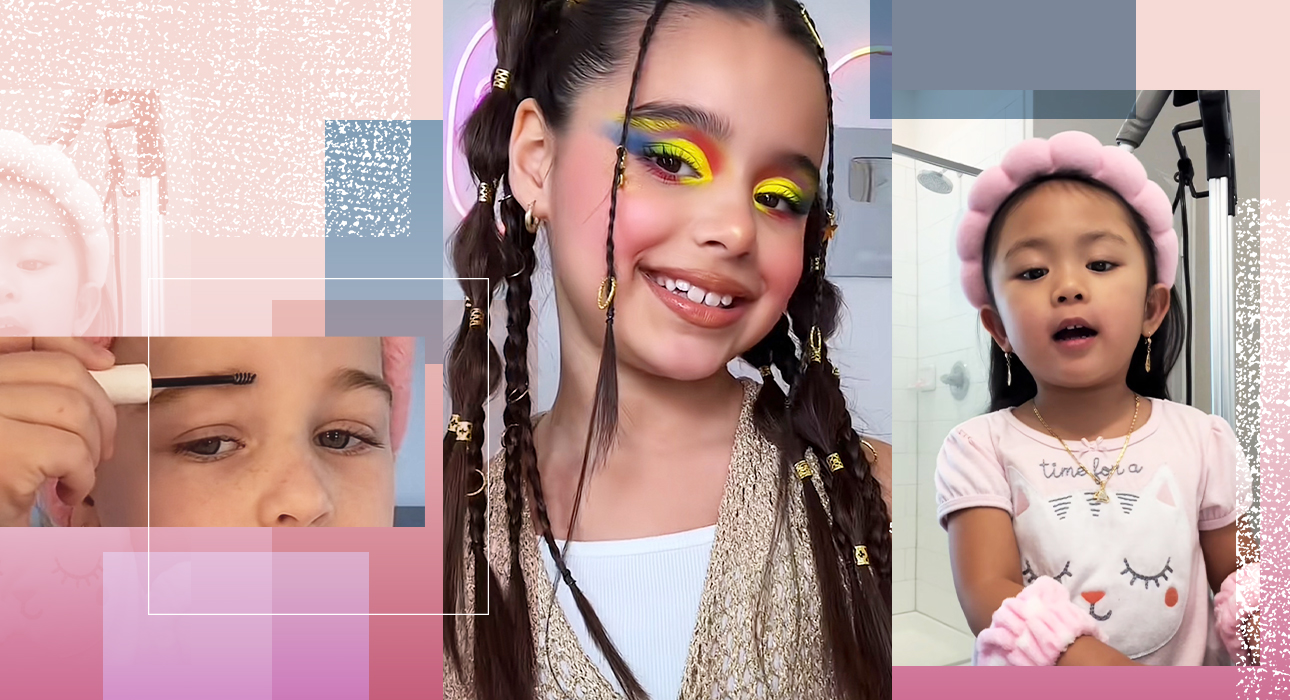When the first videos of kids applying makeup and skin care appeared online, millennials and zoomers were confused. The videos received a lot of views, dislikes and negative comments, and the main message was “children should not use cosmetics”. This excitement continues today.
Looks like there’s something to think about here. Aggressive ingredients really harm sensitive skin. But not everything is that simple. Together with beautician-esthetician Natalya Kazakova and dermatologist Sofia Teter, we will find out whether the children’s beauty industry is as dangerous as they say.

To understand whether children can use cosmetics, you first need to know how the child’s skin works. It consists of three layers, like that of an adult: epidermis, dermis and hypodermis. The upper layer is 1.5-2 times thinner and is fully formed only in 6-7 years. But even then it cannot fully perform its functions and is prone to:
– Strong reactions to external factors (cold weather, wind, sun, dust);
– Slow functioning of the sebaceous glands;
– Dehydration.
Fading trend or marketing tactic?

According to research, in 2023, girls under the age of 13 spent an average of 10 thousand rubles on cosmetics and 12 thousand rubles on skin care products. Nearly 75% of teens admitted they look at beauty blogs at least once a day. 70% of children surveyed often discuss the topic of beauty with their friends.
Just 10 years ago, the average age of starting to use beauty products was 12-14, but now this age has increased to 8-9. For the first time in history, four generations are buying cosmetics at the same time, from grandchildren to grandmothers. Of course, such changes are affected by various factors:
Social media. Videos of teens and influencers showing off their beauty routines are increasingly popping up on social media. This type of content spreads quickly and is visually appealing.
Early digital experience. Generation Alpha actually grew up during the Reels era. Surfing through thousands of makeup videos is perceived as a game and affects the perception of cosmetics.
Marketing. Marketing strategies of brands only increase children’s interest in cosmetics – bright packaging, flashy design, advertising by influencers. Individual products and even their categories are positioned specifically for the youngest buyers.
What are the benefits of baby skin care?
Children’s skin is more sensitive to external factors than adults. It’s all about the absence of the hydrolipid mantle (a thin film on the surface of the skin). Therefore it is necessary to take care of it. Use gentle cleansing foams and protective cream. These products should be specially selected by paying attention to the label “Recommended for ages 3 and above”.
Natalya Kazakova said, “By teaching your child to care from early childhood, you will ensure that you have healthy and beautiful skin in the future. In this way, you can reduce the risk of defects such as blackheads, acne, rosacea, dryness and wrinkles.”
Sofia Teter added that sun protection is also necessary. SPF cream should be simple and recommended by your pediatrician. The important thing is to completely avoid direct sunlight until the age of 6 months, after which you can use physical (mineral) filters.
Of course, it cannot be said that makeup is beneficial (even for adults). But if a child wants to do makeup, you need to control the process and choose really quality products.
What are the dangers of baby skin care?

Unfortunately, the beauty tutorials we see from kids online go far beyond cleansing foam and cream. Typically junior bloggers use serums, acids, even retinol and niacinamide. Of course, such a “departure” cannot pass without a trace, but it promises many consequences.
Damage to the skin barrier. Active ingredients cause irritation, erosion and even scarring.
The appearance of allergies. The sooner one gets used to preservatives, the higher the risk of developing allergies.
Psychological risks. An early obsession with appearance can increase anxiety, lower self-esteem, and contribute to the desire to look older.
What about “children’s cosmetics”?
Unfortunately, labeling does not guarantee complete safety. First of all, the rules and standards differ in each country. Secondly, the usual bright packaging often contains a large number of chemical components that can also harm the child’s skin.
Meanwhile, in Russia there is increased control over the safety of children’s cosmetics. We have restrictions on the use of preservatives, fragrances and dyes. Irritating and sensitizing substances, retinoids, aggressive acids and highly concentrated alcohols are prohibited. Toxicological and dermatological tests are also required.
However, it is still important to teach your child proper skin care instead of following trends.
Source: People Talk
I’m Roger Gritton, and I’ve been writing for the The Fashion Vibes for over 5 years now. My specialty is beauty news; I’m passionate about covering the latest trends, products, and innovations in the industry. In my time there, I’ve become known as an authority on all things beauty-related.
I love discovering new experts to interview, researching up-and-coming ingredients and techniques that are making their way onto our beauty shelves and highlighting people who are making a difference in the world of cosmetics. My work has appeared not only on The Fashion Vibes, but also several other publications including the New York Times Magazine, Allure Magazine and Refinery29.





